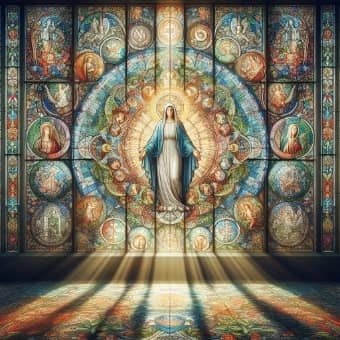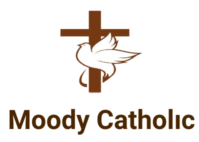The Influence of the Virgin Mary on Catholicism
Devotion, Art, and Doctrine
The figure of the Virgin Mary holds a fundamental place in the heart of Catholic tradition. Regarded as the Mother of God and the Queen of Heaven, Mary represents the epitome of purity, compassion, and humble obedience to the will of the Divine. Through the centuries, her influence has shaped the church’s liturgy, art, and theology.

Devotion to Mary in the Catholic Church
The veneration of the Blessed Virgin is one of the most distinctive aspects of Catholic spirituality. This devotional practice is expressed through prayers, such as the “Hail Mary” and the “Rosary,” which centers on meditations on the life of Christ and his mother.
The Catholic Church teaches that Mary, having been preserved from original sin, was taken up body and soul into heavenly glory. This belief is celebrated on August 15th, the Feast of the Assumption, one of the Holy Days of Obligation.
Marian apparitions, such as those reported in Lourdes, Fatima, and Guadalupe, have played pivotal roles in deepening the faith of millions. These are believed to be appearances of Mary to the faithful, often imparting messages of peace and repentance.
Popes throughout the history of the church have expressed personal devotion to Mary and frequently encourage the faithful to seek her intercession.
This blog post contains affiliate links. When you click on a link on this page and make a purchase I may earn a small commission, at no additional cost to you. Thank you for your support.
Mary in Catholic Art
To walk through the corridors of a Catholic cathedral is to witness a gallery of Marian art across the ages. From Michelangelo’s Pieta, capturing the sorrow of Mary cradling the lifeless body of Christ, to the countless icons which depict her loving gaze, the art is a testament to her revered status.
Gothic cathedrals are adorned with statues and stained glass that bring to life the Annunciation, the Nativity, and the Assumption. These visual representations not only adorn sacred spaces but also serve as catechetical tools, imparting the narrative of Mary’s role in the salvation history.
Mary’s Role in Catholic Doctrine
Catholic doctrine holds Mary in a position of unparalleled honor. Key dogmas concerning Mary include her immaculate conception, her perpetual virginity, and her assumption into heaven.
The church emphasizes that Mary, while exalted, is not worshipped, but rather venerated; a distinction is made between worship due to God alone and veneration offered to the saints. The Council of Ephesus in 431 A.D. proclaimed Mary Theotokos, meaning “God-bearer,” a title that affirmed the divinity of Christ.
Moreover, Mary is considered as the New Eve, whose obedience counteracts the disobedience of Eve, offering an archetype of fidelity and surrender to God’s plan. This Marian doctrine continues to evolve, influenced by theological discourse, popular devotion, and the insights of mystics.
Virgin Mary Pendant Necklace
Deepen your devotion to the Blessed Mother with this exquisite sterling silver Virgin Mary pendant. This beautiful piece is not only a stunning accessory but also a powerful symbol of faith and protection. Click here to discover this and other meaningful jewelry options on Amazon.
Conclusion
Mary, the humble woman from Nazareth, occupies a unique and exalted position in Catholicism. Throughout the church’s history, she has been a figure of profound influence, impacting doctrine, devotional practice, and the artistic expression of the faith.
Her life serves as a model of unwavering faith and love, and her intercession is sought by millions worldwide. The Virgin Mary is not merely a historical figure but a living presence believed to continually guide and nurture the body of the Church.
If you found this content helpful, you can support Moody Catholic and keep this blog ad free by making a donation of any amount. Learn more by reading the – Support Our Blog page.
